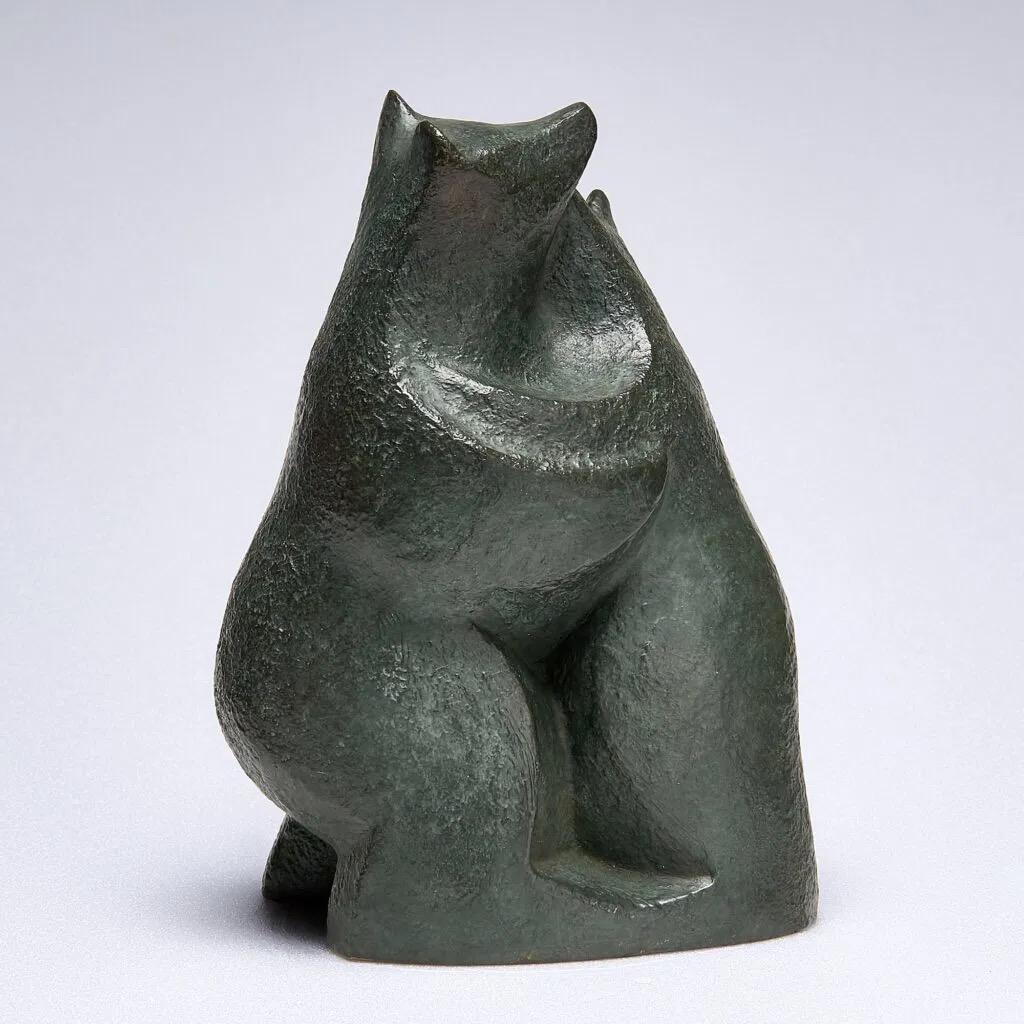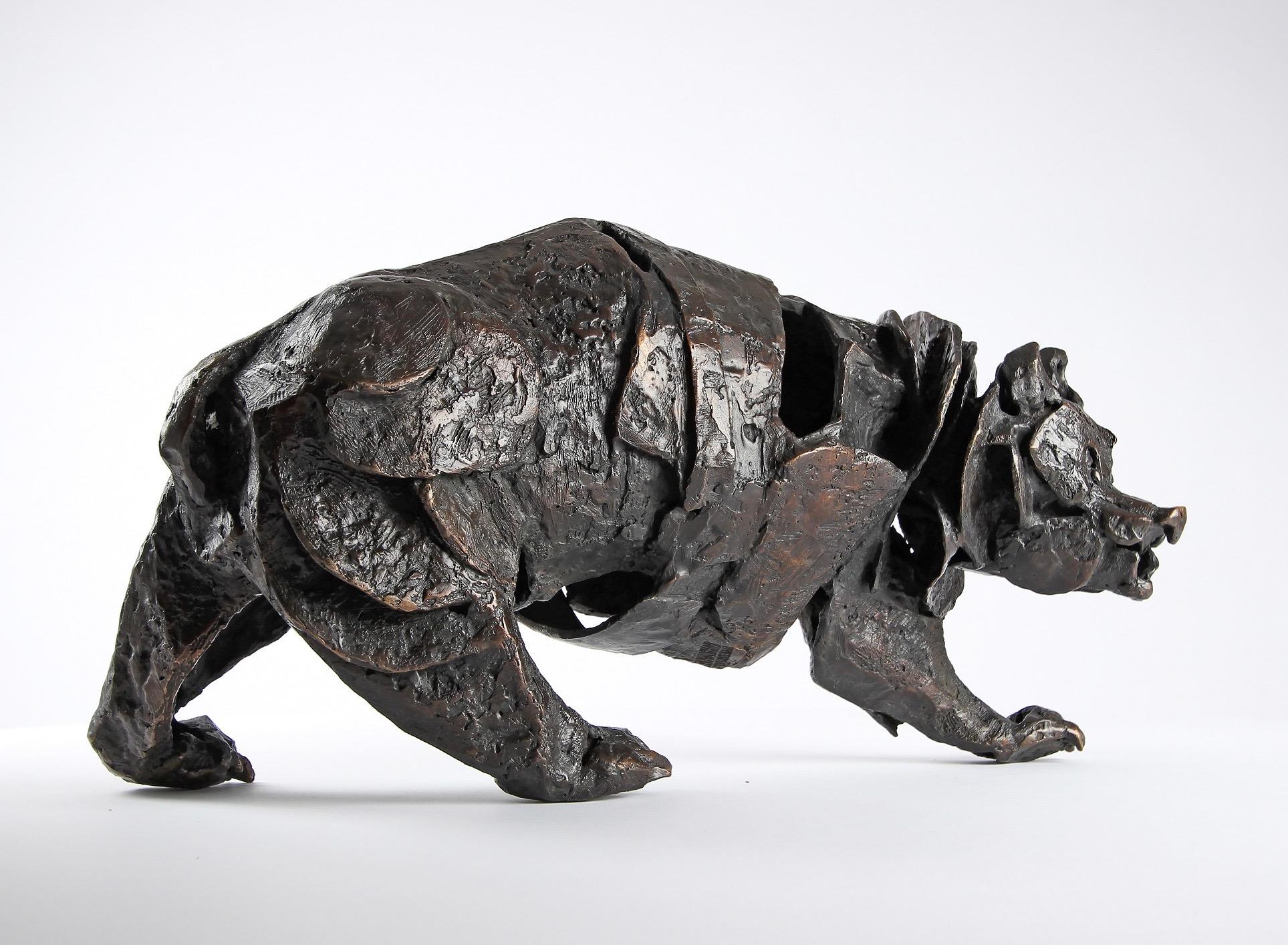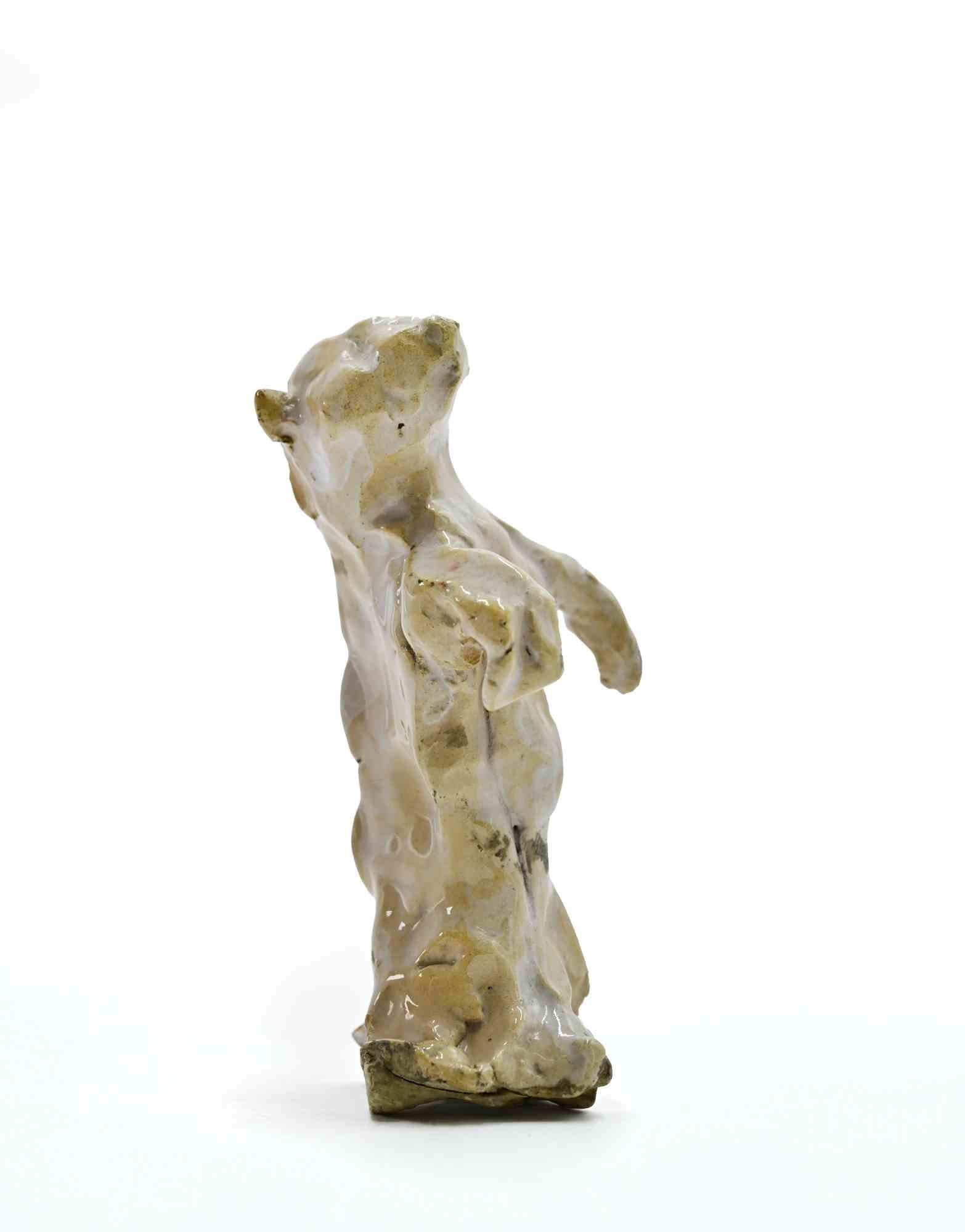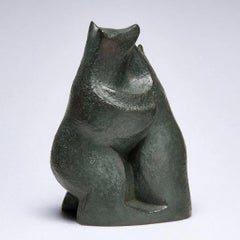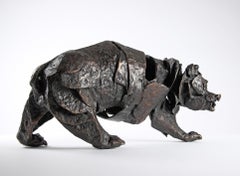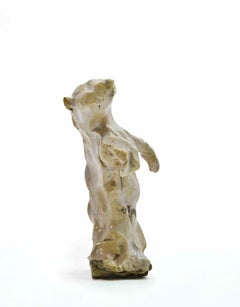Items Similar to Bear Dentist
Want more images or videos?
Request additional images or videos from the seller
1 of 10
Christophe FratinBear Dentistcirca 1850
circa 1850
$12,400.97
£9,292.20
€10,500
CA$17,412.33
A$19,083.38
CHF 9,965.71
MX$228,978.59
NOK 125,136.46
SEK 117,873.90
DKK 79,976.35
About the Item
Bear Dentist
by Christophe FRATIN (1801-1864)
Bronze with nuanced old gilt-light brown patina
Signed on the base "Fratin"
Old edition cast
France
mid-19th century
height 15 cm
A similar model is reproduced in "Le sculpteur animalier Christophe Fratin; Essai sur sa vie et sur son œuvre", J. Bougon, Le Raincy, 1983, page 42.
Biography
Christopher Fratin (1801-1864) exhibited in 1831 and regularly at the Salon. During these fairs, he met Antoine-Louis Barye whom showed with success successively "Tiger devouring a Gharial" in 1831, and his monumental "Lion and Serpent" 1833, leaving thus during these two years Fratin in shadow. He eventually met with success and esteem: the reviews were glowing, his works sold well.
The repeated success of the sculptor at the 1834, 1835 and 1836 Salons arouse the interest of the aristocracy. So he worked at Château de Dampierre for the Duke of Luynes, where he made the Lions for the pediment of the main building and major interior works. Fratin, who excelled in making decorative items, provided four small pieces for achieving a princely table, for which Barye was the main architect. The hearing of Fratin quickly became international, he left for England between 1833 and 1834. The artist also made great romantic groups in Germany, in Potsdam at Sanssouci and Babelsberg castles where some still remained. Throughout his career, the interest of the English customers did not fail. This tireless worker even exported his work to St. Petersburg, where they decorated the park of the Emperor of Russia. Romanticism reflected in an obvious way in his subjects, where the horse held an important place.
Critics are numerous and often laudatory, they had Fratin as "formidable rival" of Barye in the representation of animals. These same critics pointed to his eagerness to create models and its ability to provide large works. The works were exhibited at the Maison Susse running a store at Passage des Panoramas in Paris, where they were then offered in plaster. It was really in 1835 that start editions of bronzes by Fratin, essentially cast by Quesnel workshops. Christophe Fratin was thus one of the first if not the first, to get into the editing sculpture. These bronzes were produced by the technique of sand casting (which had been controlled by the founders of the time) and were made in various sizes. These early years were taking place under the sign of success. He obtained public commissions from his native city of Metz in which he offered two life-sized Dogs, the year of his marriage, June 25, 1836 with Marguerite Sophie Pioche, the daughter of his art teacher. In 1837, the show became hostile to the young Romantic generation and the participation of Fratin was reduced to its "Mares". He did not appear the following year and in 1840 his contributions at the Salons were refused, accordingly orders began to fail. The artist's career seemed to tilt and financial difficulties became paramount.
Fratin then concentrated on edited casts and developing small commercial models. This inflection in his career was reflected in the small portrait charge,"Fratin by himself", where humor sculptor appeared. The artist, hands in pockets, is dressed in his work coat and wearing a cap. His pockets swarm of small animals: monkeys, dogs, spaniels ... In the years that followed, Fratin difficulty in obtaining public commissions, such as the "Eagles", ended in 1853, when placed on the Esplanade Metz, or the command of a pediment representing "Hunting" in 1855, for the Visconti courtyard of the Louvre Palace then under construction. Finally, in 1862, he made his last order by ministerial decision "Goat and kid". He also exhibited at various exhibitions such as the exhibition of the Society of Friends of the Arts of Bordeaux, Metz World Expo under the patronage of the Empress in 1861, or the Universal Exhibition of 1862 held in London. In 1849, as a result of serious financial difficulties, Christopher Fratin organized in Paris the first public sale without reproduction rights of 450 of his models. In 1854 he organized his second sale, which consisted mainly of bronze models with reproduction rights, which meant that Fratin renounced the use of those works. Fratin preferred and sold his works in public sales rather than opening a shop as Antoine-Louis Barye and Pierre-Jules Mêne did. Christopher Fratin organized this type of sale every year until his death in 1864.
- Creator:Christophe Fratin (1801-1864, French)
- Creation Year:circa 1850
- Dimensions:Height: 5.91 in (15 cm)Width: 4.53 in (11.5 cm)Depth: 3.75 in (9.5 cm)
- Medium:
- Movement & Style:
- Period:
- Condition:
- Gallery Location:PARIS, FR
- Reference Number:Seller: N.78131stDibs: LU2514213843522
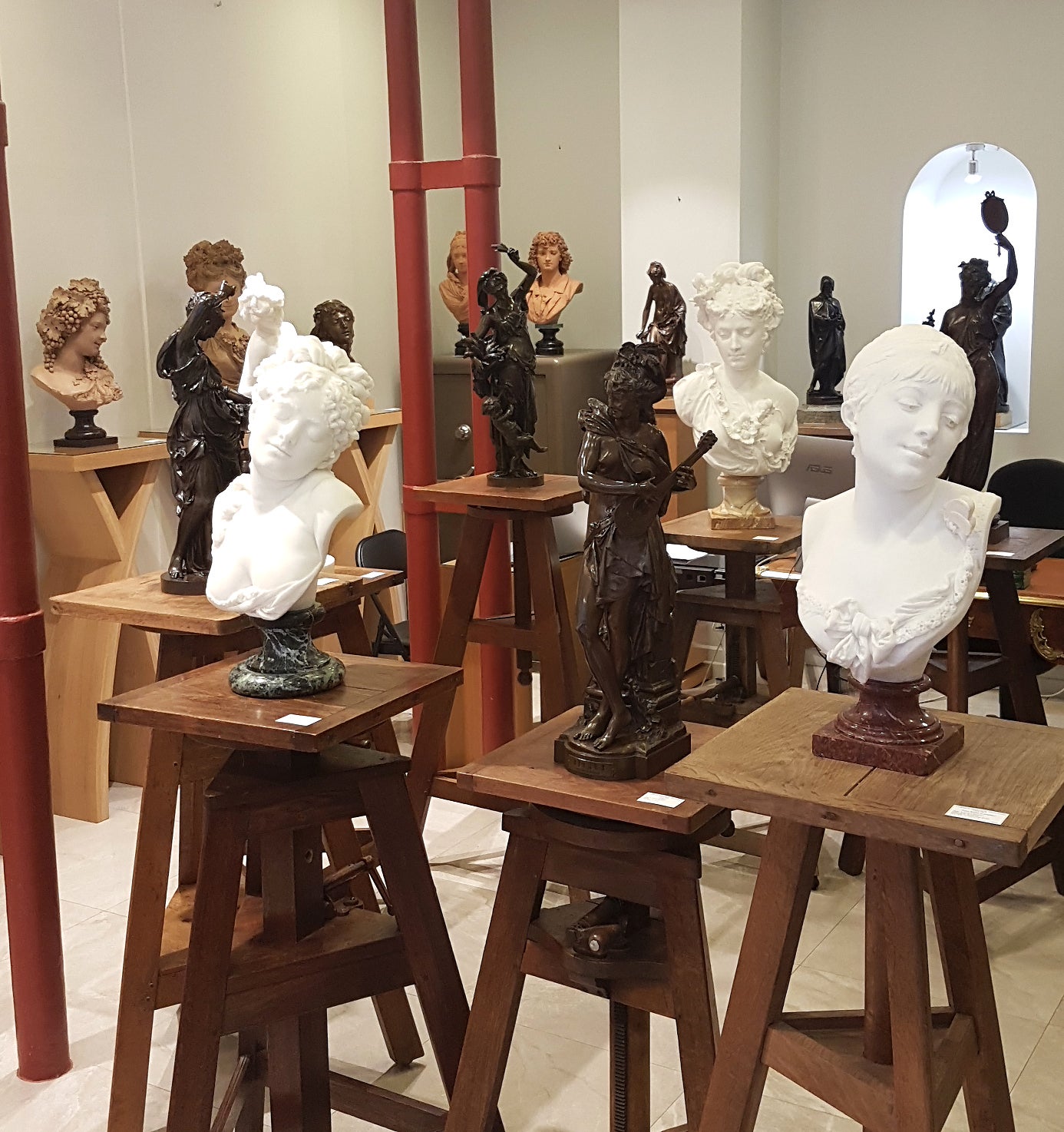
About the Seller
5.0
Recognized Seller
These prestigious sellers are industry leaders and represent the highest echelon for item quality and design.
Gold Seller
Premium sellers maintaining a 4.3+ rating and 24-hour response times
Established in 1992
1stDibs seller since 2023
10 sales on 1stDibs
Typical response time: 12 hours
- ShippingRetrieving quote...Shipping from: PARIS, France
- Return Policy
Authenticity Guarantee
In the unlikely event there’s an issue with an item’s authenticity, contact us within 1 year for a full refund. DetailsMoney-Back Guarantee
If your item is not as described, is damaged in transit, or does not arrive, contact us within 7 days for a full refund. Details24-Hour Cancellation
You have a 24-hour grace period in which to reconsider your purchase, with no questions asked.Vetted Professional Sellers
Our world-class sellers must adhere to strict standards for service and quality, maintaining the integrity of our listings.Price-Match Guarantee
If you find that a seller listed the same item for a lower price elsewhere, we’ll match it.Trusted Global Delivery
Our best-in-class carrier network provides specialized shipping options worldwide, including custom delivery.More From This Seller
View AllBear carrying a basket, with a dog
By Christophe Fratin
Located in PARIS, FR
Bear carrying a basket, with a dog
Match holder
by Christophe FRATIN (1801-1864)
Cast in bronze with a dark brown patina
Signed to the front of the base "Fratin"
Old edition cast
F...
Category
Mid-19th Century French School Figurative Sculptures
Materials
Bronze
Pyrenean bear sitting
By Georges Lucien Guyot
Located in PARIS, FR
Pyrenean bear sitting
by Georges GUYOT (1885-1972)
Sculpture in bronze with a nuanced black patina
Signed " Guyot " on the base
Cast by Martin Canal, without founder mark
France
circa 1935
Height 18,4 cm
Width 17 cm
Depth 18 cm
Biography :
Georges Lucien Guyot (1885-1973) known as Georges Guyot was a French animal artist. From an early age, he showed artistic abilities, but the modest conditions of his parents did not allow him to study art. He was doing his apprenticeship with a woodcarver. Guyot then excelled at copying works of the fifteenth, sixteenth and seventeenth centuries, but soon he showed a special attraction for nature. This attraction led him to the Jardin des Plantes in Paris where he could study wild animals and translated his observations into sculpture and painting.
As a famous figure of Montmartre, he was the host of the Bateau-Lavoir from the time of Cubism. In 1931, Georges Guyot joined the group of "The Twelve", created by François Pompon and Jane Poupelet, gathering sculptors like Marcel Lémar, Paul Jouve, André Margat, Jean-Claude de Saint-Marceaux, Georges Hilbert, or even the painter Adrienne Jouclard...
Category
1930s French School Figurative Sculptures
Materials
Bronze
Gorilla kidnapping a woman
By Emmanuel Fremiet
Located in PARIS, FR
Emmanuel FREMIET (1824-1910)
Gorilla kidnapping a woman
A rare bronze group with a greenish dark brown patina
signed "E. Fremiet" on the base
cast by " F. Barbedienne Fondeur " (fo...
Category
Late 19th Century French School Figurative Sculptures
Materials
Bronze
Ravageot and Ravageode
By Emmanuel Fremiet
Located in PARIS, FR
Bronze with nuanced dark brown patina
Old edition cast
version with a leash at the necks of dogs
France
circa 1890
height 14,5 cm
diam. 17 cm
A similar model is reproduced in "Emma...
Category
Late 19th Century French School Figurative Sculptures
Materials
Bronze
Self-portrait
By Christophe Fratin
Located in PARIS, FR
Self-portrait
"Fratin by himself"
by Christophe FRATIN (1801-1864)
Bronze with nuanced dark brown patina
Signed on the base "Fratin"
Raised on a wooden base, with an old collector s...
Category
1840s French School Figurative Sculptures
Materials
Bronze
Lion strucking a wildboar
By Antoine-Louis Barye
Located in PARIS, FR
Lion strucking a wildboar
by Antoine-Louis BARYE (1796-1875)
A bronze sculpture with dark brown patina
Signed on the base with moulding " Barye "
Posthumous cast probably by Graux-M...
Category
Late 19th Century French School Figurative Sculptures
Materials
Bronze
You May Also Like
Tenderness by Eric Valat - Bronze sculpture of two bears hugging, animal
By Eric Valat
Located in Paris, FR
Bronze sculpture, inches 6.69 x 5.11 x 3.93 / 17 × 13 × 10 cm.
Straight out of childhood, the bear appears in Eric Valat’s bestiary sculptural vocabulary. The sculpture shows an ela...
Category
2010s Contemporary Figurative Sculptures
Materials
Bronze
Assembly Bear by Chésade - Contemporary bronze sculpture of a bear
By Chésade
Located in Paris, FR
Assembly Bear, one-off bronze sculpture by French contemporary sculptor Chésade. 18 cm × 40 cm × 23 cm.
Chésade's bronze sculptures stand out by their very tactile and narrative surf...
Category
2010s Contemporary Figurative Sculptures
Materials
Bronze
Bear - Sculpture by Sirio Pellegrini - 1960s
Located in Roma, IT
Painted Ceramic sculpture realized by Sirio Pellegrini in 1960s.
Good condition.
Sirio Pellegrini, born in Rome on March 1, 1922, of Abruzzo origins (Capestrano), spent his childho...
Category
1960s Modern Figurative Sculptures
Materials
Ceramic
Bear Cub by Eric Valat - Bronze sculpture of a bear, animal sculpture, fun, baby
By Eric Valat
Located in Paris, FR
Bear Cub is a bronze sculpture by contemporary artist Eric Valat, dimensions are 9.5 × 11 × 6.5 cm (3.7 × 4.3 × 2.6 in).
The sculpture is signed and numbered, it is part of a limite...
Category
2010s Contemporary Figurative Sculptures
Materials
Bronze
Bengal Tiger Licking Its Paw – Giacomo Merculiano
Located in Gent, VOV
In this remarkable bronze sculpture, Giacomo Merculiano invites us into a moment of profound stillness and primal grace. Bengal Tiger Licking Its Paw is not a theatrical display of s...
Category
20th Century Figurative Sculptures
Materials
Bronze
Antique 19th Century French Bonze Animalier Brown Bear Statue Sculpture Paris
By Antoine-Louis Barye
Located in Portland, OR
A good antique bronze sculpture of a brown bear by the celebrated French Animalier sculptor Antoine-Louis Barye, circa 1870.
The bronze depicts a brown bear in a dynamic pose, head h...
Category
1860s French School Figurative Sculptures
Materials
Marble, Bronze
More Ways To Browse
Antique Bears
Bronze Bear
19th Century French Bronze Sculpture Lion
Pierre Jules Mene Bronze Sculpture
19th Century Life Size Bronze Sculpture
Bear Sculpture Bronze
Antique Bronze Bear
Dentist Antique
Antique Spaniel Dogs
Pierre Jule Mene Horse Sculptures
Pierre Jules Mene Bronze Horse
Antoine Louis Barye Lion Plaster
No Art Here Javier
Picasso Bouquet A La Pomme
Picasso Yan
Pinky And Blue Boy
Pippin Drysdale
Puffin Bronze
